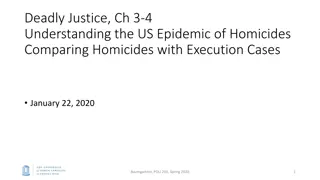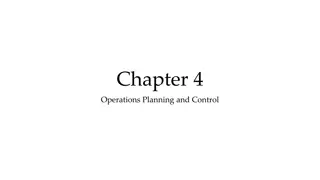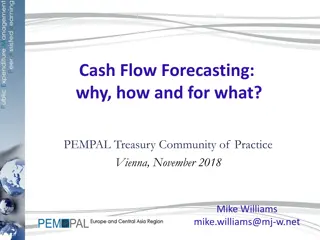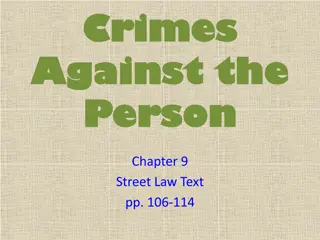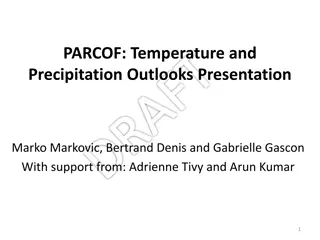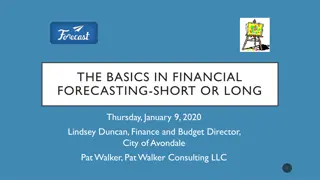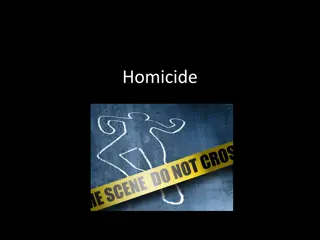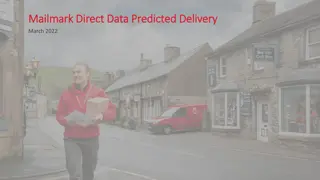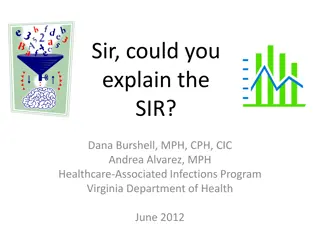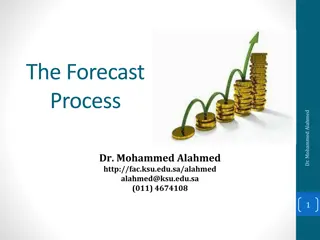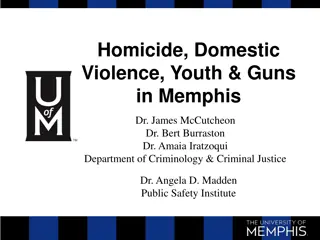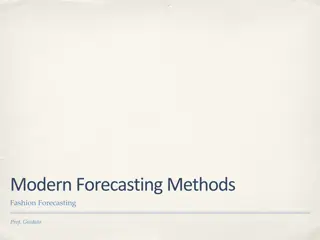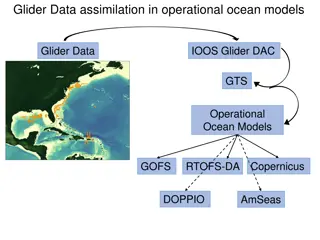Time Series Analysis and Forecasting for Predicted Homicide Rate in St. Louis
This project aims to locate the best forecasting model to predict the homicide rate for St. Louis in 2015, analyzing historical data to forecast where and how many incidents may occur. Utilizing time series analysis, the objective is to extrapolate patterns and forecast future values based on past data. Forecast accuracy metrics such as mean squared forecast error and percentage error are employed to enhance the prediction quality. District 1 contributes 11% to the overall predicted homicide rate for the city.
Uploaded on Sep 11, 2024 | 0 Views
Download Presentation

Please find below an Image/Link to download the presentation.
The content on the website is provided AS IS for your information and personal use only. It may not be sold, licensed, or shared on other websites without obtaining consent from the author. Download presentation by click this link. If you encounter any issues during the download, it is possible that the publisher has removed the file from their server.
E N D
Presentation Transcript
Predicted Homicide Rate for 2015 St. Louis James Francois Brad Precht Sophia Russo Ken Webb Xichen Liu
Project Objective To locate the best forecasting model to predict the Homicide rate for the City of St. Louis for 2015. To show where the Homicides will happen, and how many will happen in each area.
Time Series Analysis and Forecasting The objective of time series analysis is to discover a pattern in the historical data or time series; and then extrapolate the pattern show show predicted values for the future. The forecast is based solely on past values of the variable and/or on past forecast errors.
Time Series Analysis and Forecasting Why it is useful to predict the Homicide rate. Since the Homicide rate has no linear format, the use of time series analysis will give the best predicted values for the future based on historic data.
Forecast Error The key concept associated with measuring forecast accuracy is forecast error, which shows the difference between the predicted value and the actual value, as defined by Forecast Error = Actual Value - Forecast
Mean Squared Forecast Error Another measure that negates the problem of positive and negative forecast errors offsetting each other is obtained by computing the average of the squared forecast errors. Mean Squared Forecast Error = average of the sum of squared forecast errors
Percentage Error The average of the absolute values of the percentage forecast errors. This was used to see how good of a prediction we were getting for each neighborhood. Using percentages instead of unit numbers gives a more universal understanding. Ex: One may not know if being off by 5 murders is a lot, but it is universally understood that being off by 80% is a large amount
District 1 Homicide Forecast District 1 makes up 11% of the overall predicted Homicide Rate for St. Louis City.
District 1 Homicide Forecast By Neighborhood
District 2 Homicide Forecast District 2 makes up 3% of the overall predicted Homicide Rate for St. Louis City.
District 2 Homicide Forecast By Neighborhood
District 3 Homicide Forecast District 3 makes up 11% of the overall predicted Homicide Rate for St. Louis City.
District 3 Homicide Forecast By Neighborhood
District 4 Homicide Forecast District 4 makes up 15% of the overall predicted Homicide Rate for St. Louis City.
District 4 Homicide Forecast By Neighborhood Total Yearly Estimate of Homicides by Neighborhoods in District 4 7 6 5 4 3 2 1 0
District 5 Homicide Forecast District 5 makes up 27% of the overall predicted Homicide Rate for St. Louis City.
District 5 Homicide Forecast By Neighborhood
District 6 Homicide Forecast District 6 makes up 34% of the overall predicted Homicide Rate for St. Louis City.
District 6 Homicide Forecast By Neighborhood
To Summarize: Homicides in St. Louis Areas Predicted Homicides 2015 District 1 14 District 2 3.25 District 3 13.5 District 4 18.75 District 5 34 District 6 42.5 St. Louis City 126





